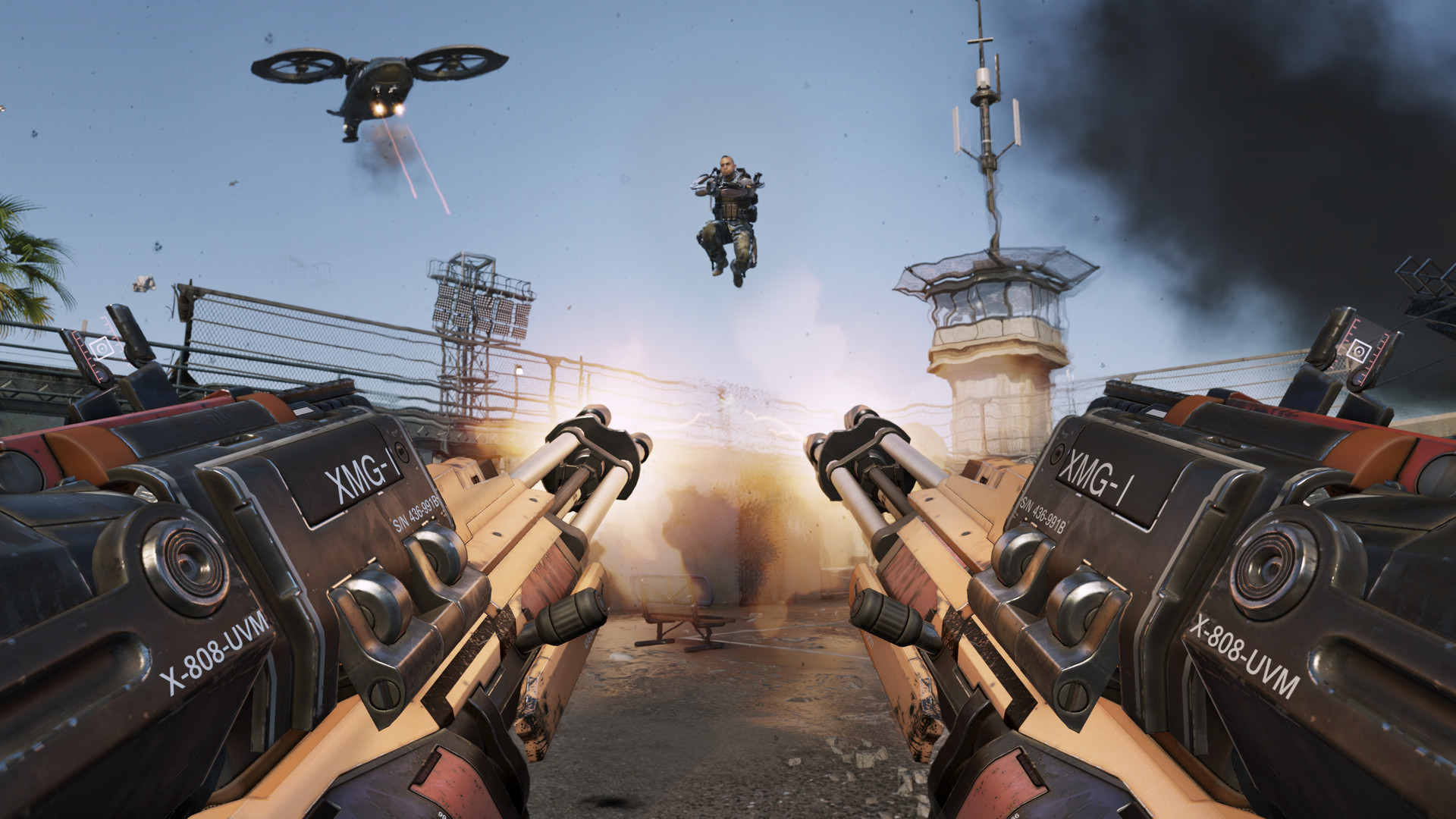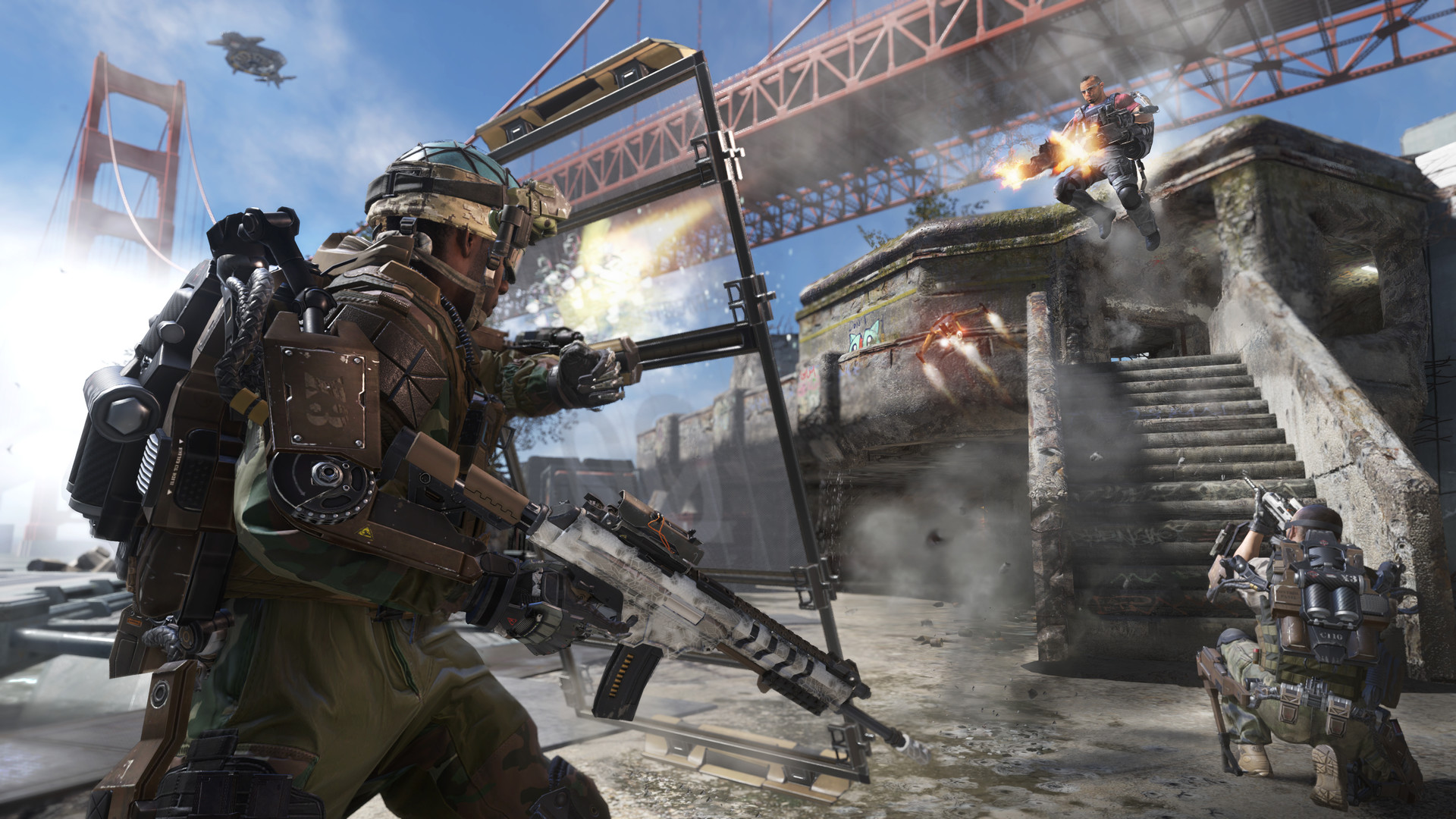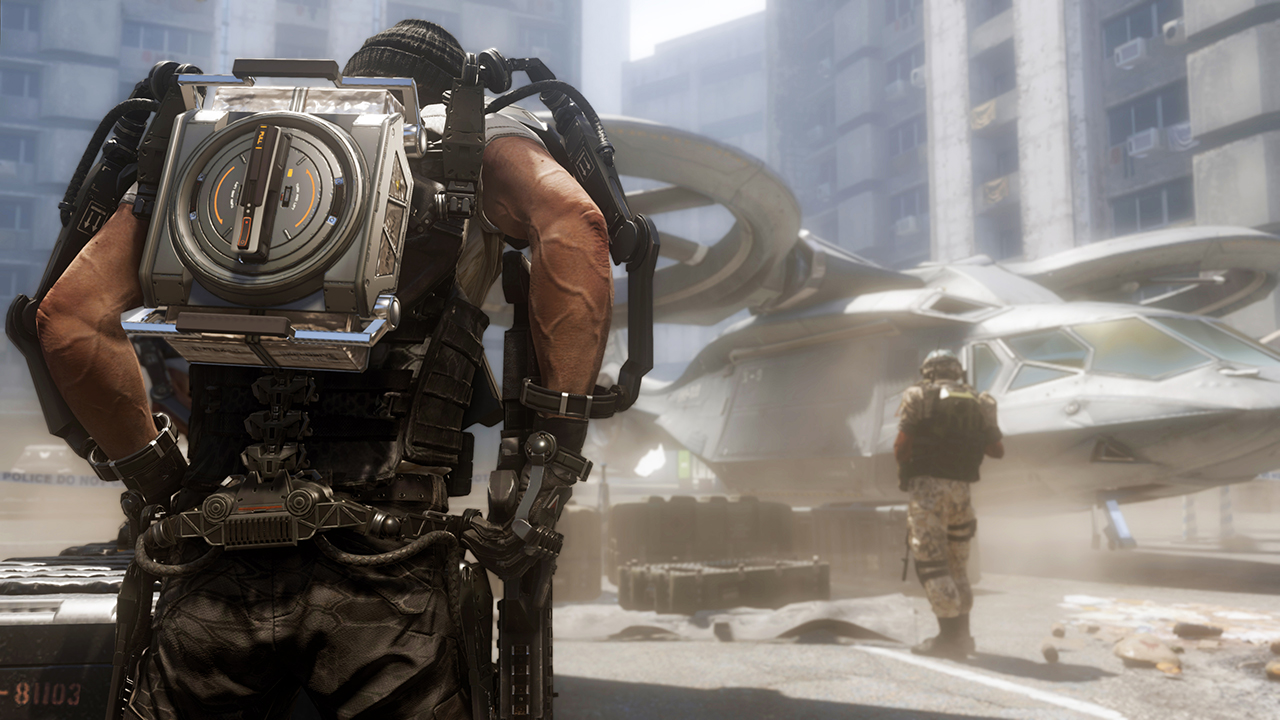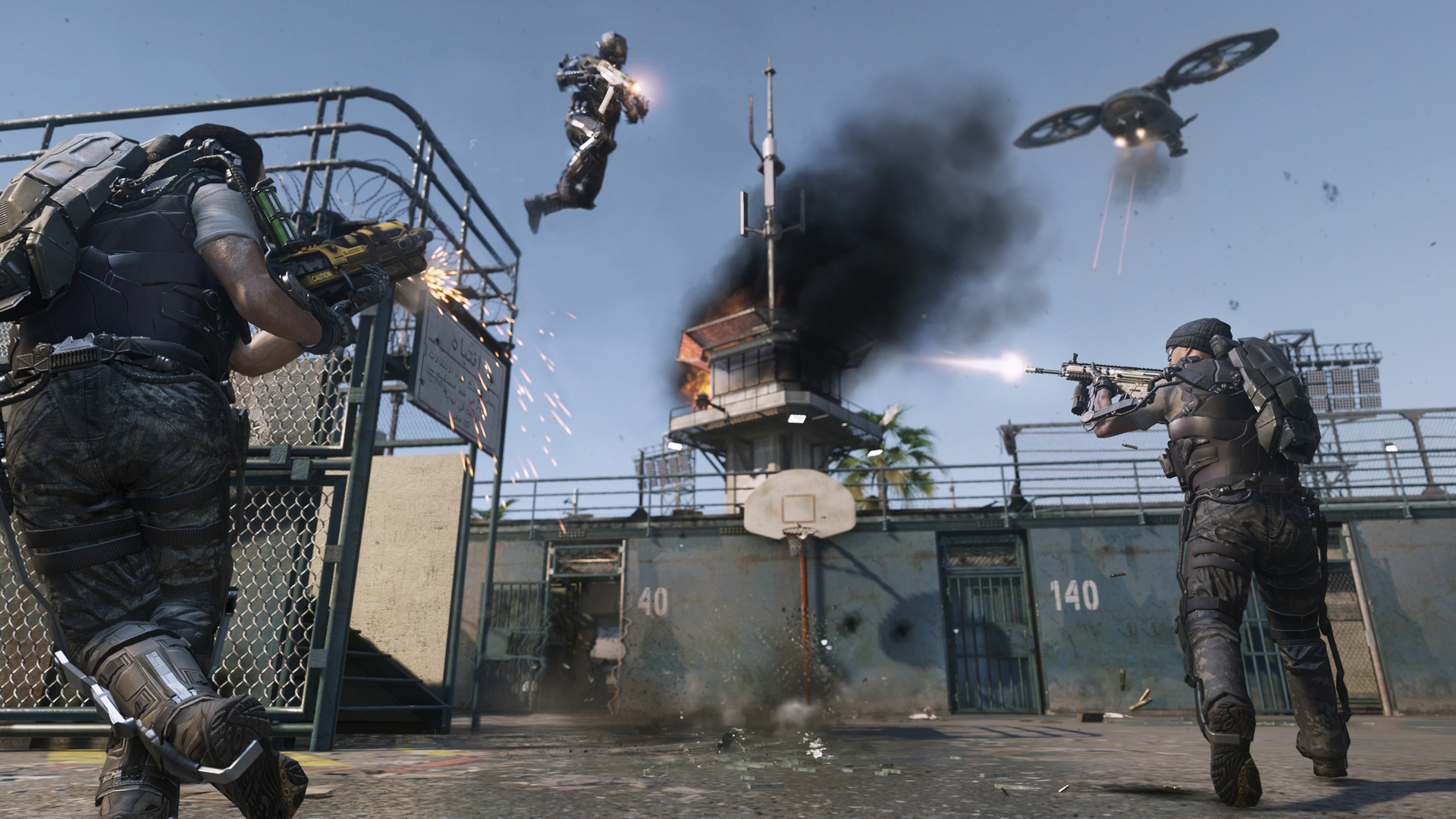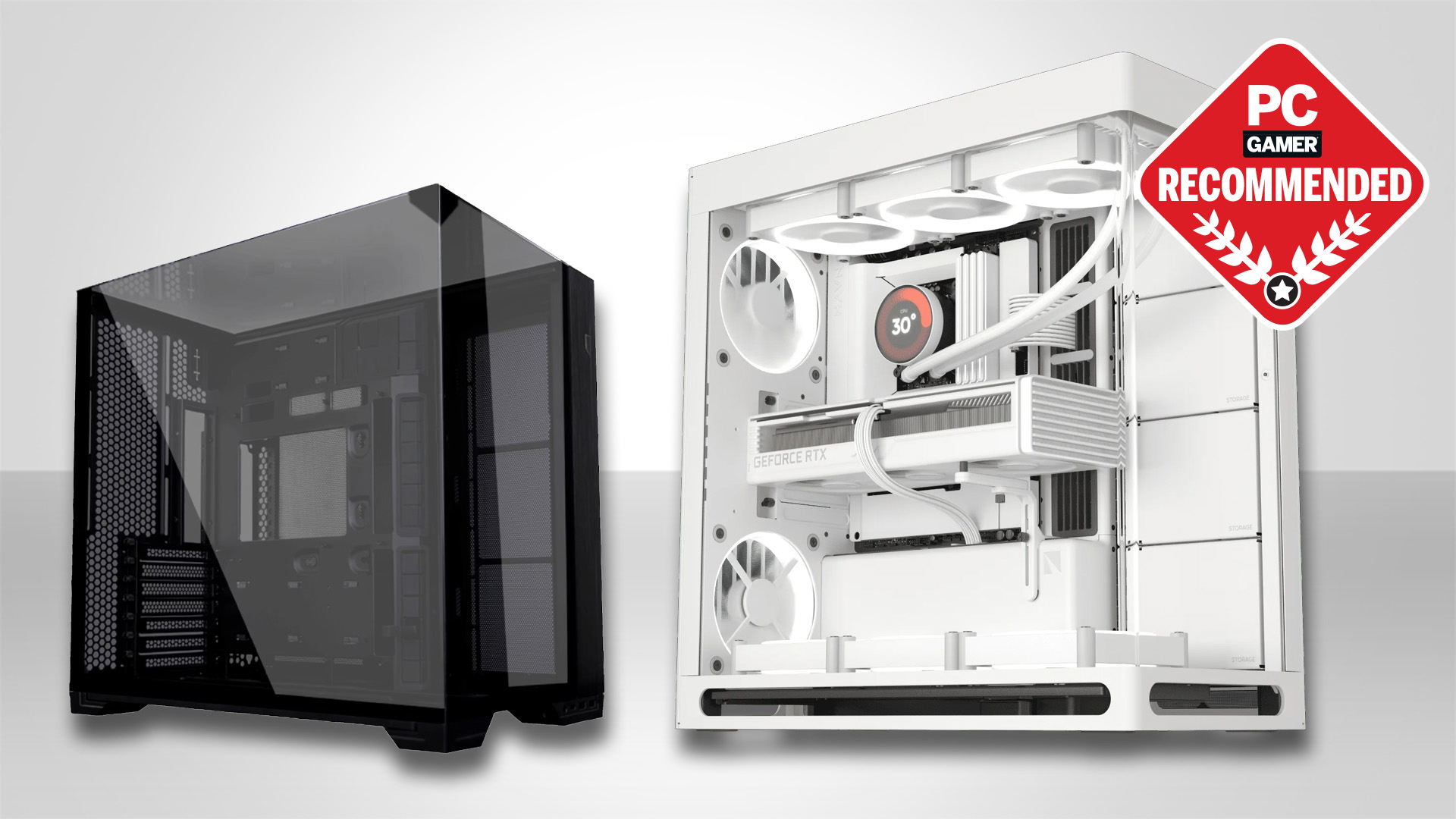The life and death of Call of Duty's most controversial mechanic, the boost jump: 'They almost threw me out of the room'
How CoD embraced the future, before backlash brought it back down to earth.
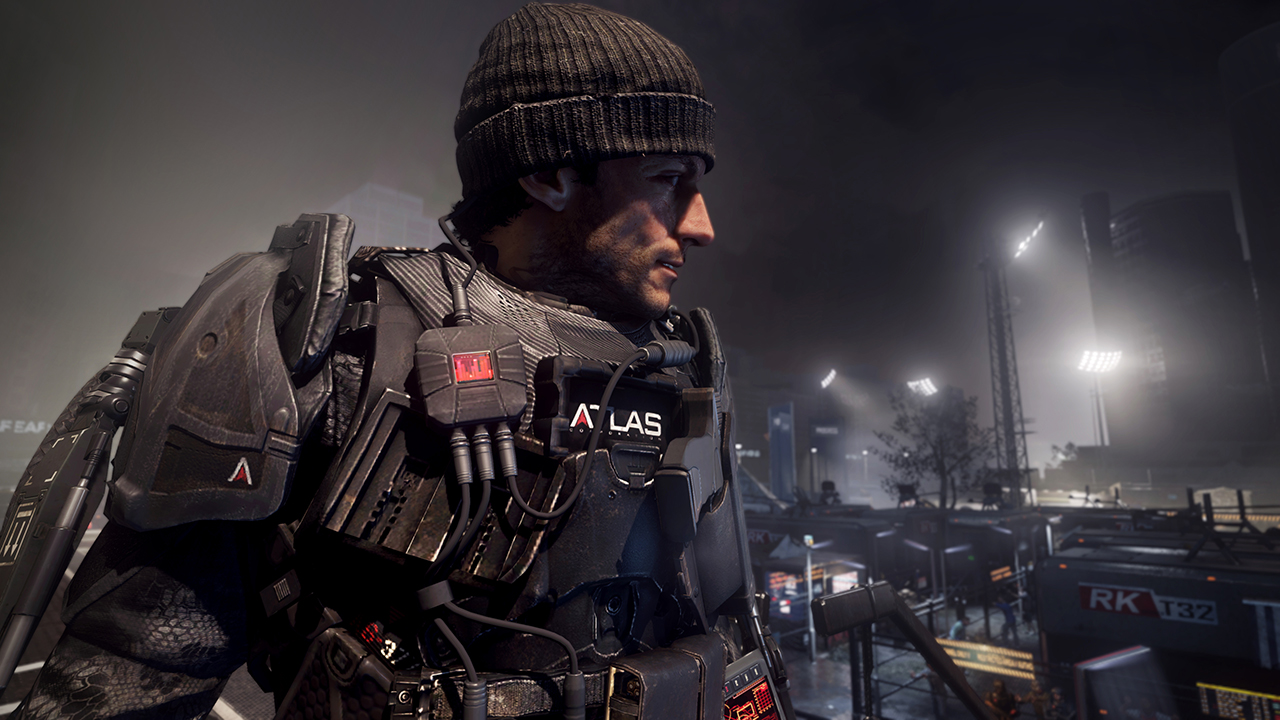
"When I first showed them the boost jump, are you kidding me? They almost threw me out of the room." Former Call of Duty director Glen Schofield is recalling the day he pitched Advanced Warfare's signature mechanic to Activision.
As the series entered its second decade, it had already begun to veer away from historical drama and behind-the-headlines espionage. Treyarch was developing drone swarms for Black Ops 2, and Infinity Ward had dared to kick off the singleplayer campaign of Call of Duty: Ghosts in space.
What Schofield was proposing, though, was something different: a futuristic moveset that would interfere with the fundamentals of CoD's sacred multiplayer component. Rather than merely providing novelty in the campaign, the boost jump would change the rules of competitive deathmatch, enabling players to reach high rooftops in newly vertiginous maps, and gain an edge through skilful combination of double jumps and mid-air dashes.
If the idea backfired—drawing ire from a community which had grown used to its annualised fix of familiar FPS action—then Activision would be facing a serious threat to its most reliable cash cow.
Nonetheless, Advanced Warfare's concept was greenlit. Schofield's studio, Sledgehammer, had proven itself by saving Modern Warfare 3 after many of that project's original developers had walked out to work on Titanfall. It had earned some goodwill. But Schofield didn't take that trust for granted.
"We started to work on the game," he says. "We knew that it had been approved, but they weren't happy with the boost jump idea. So we put it in one of our older levels." In the earliest prototypes, Advanced Warfare's movement included wall jumps, something that ultimately wouldn't arrive in the series until later iterations.
"It took a lot of time to make it fun to jump, and now you gotta work on shooting," Schofield says. "It was like building a brand new game from scratch, because you have a main character that now jumps. You have to do shooting in every single direction. So it was a big, big project."
Keep up to date with the most important stories and the best deals, as picked by the PC Gamer team.
Development was complicated by the fact that Activision's higher-ups, back in the early 2010s, didn't know what an exoskeleton was. The entire concept of the boost jump depended on the idea that future soldiers could leap around with greater power and agility, and absorb the impacts of long falls, thanks to their exosuits. "But I knew that Neill Blomkamp's Elysium and Edge of Tomorrow were coming out before our game, and they would let people know about what an exoskeleton was," Schofield says. "Finally, when Activision saw the boost jump with the exoskeleton, and then we showed them a couple of trailers from Elysium, they understood."
The publisher was blown away. But the boost jump wasn't where its reservations ended. Schofield had envisioned a world 50 years in the future, where tanks walked. "I had a rule on the futuristic stuff. Anything in it had to have a hypothesis or prototype or theory," he says. "What I did was, I actually went back 50 years in the past, and I looked at predictions, and they were all off. And so I tried to use that same amount of change here, but we have to multiply it a little bit more because of computers and everything."
Activision proposed a compromise: that Sledgehammer shave five years off its timeline and set Advanced Warfare 45 years in the future instead. "I freaked them out with the walking tanks," Schofield says. "They're like, 'There's no such thing as a walking tank.' I said, 'You've got little walking drones right now.'"
During the same period, Schofield scheduled a private tour at NASA's Jet Propulsion Laboratory in LA. "It was a rocket scientist who showed me around," he says. "It's near the end of the day, and he said, 'I'm going to show you something. A walking tank.'"
The tank, composed of chunks of metal and wire, was lowered before Schofield's eyes. "I got video," he says. "They put a drill on it, and it was supposed to go to asteroids. I thought, 'It'd be easy just to put a turret on it in 50 years.' So Activision finally succumbed to allowing some of this stuff."
Advanced Warfare launched in 2014 to critical acclaim, with some of the more grudging praise coming from PC Gamer. "Bluntly, movement in Advanced Warfare is less fun than movement in Titanfall, which has more liberal jetpack jumps, bigger, taller maps, and wall-running chains," Tyler wrote in our review. "Even so, the exosuits do make for occasionally fun cat-and-mouse chases as we hop around all over the place."
By and large, the community responded well to the boost jump. But in subsequent years, that public mood curdled as Sledgehammer's fellow CoD studios, Treyarch and Infinity Ward, followed its lead with futuristic movement abilities.
"They then put the boost jump in the next two games," Schofield says. "So now you have three in a row with the boost jump, and the fans got a little bit sick of it. Some people say to me, 'Hey man, you created the boost jump, but I didn't really like it in the third one.' I'm like, 'Well, yeah, that has nothing to do with me.'"
Schofield laughs as another memory occurs to him. "You know what Bobby Kotick said to me after people wanted the boost jump out? He said, 'You know Glen, I think you maybe over-innovated there.' Over-innovated! I took it as a compliment."
In the wake of that shift, Sledgehammer scrapped plans for an Advanced Warfare 2, and instead took Call of Duty back to its original stomping ground, the Second World War. Activision's marketing for Call of Duty: WW2 led with the phrase 'boots on the ground', an unambiguous assurance that nobody would be wallrunning through Stalingrad.
"By then, it was enough of the boost jump," Schofield says. "And I wanted something new creatively, actually—I spent three years on Modern Warfare 3, which was about six years in the future. And then you have Advanced Warfare 45 years in the future. So for me, going back into the past was a different creative challenge. The other ones are about imagination. This one is about taking stuff that was used and making it really fun. It was a research project for me."
In the end, the cancellation of Advanced Warfare 2 was a blessing. Advanced Warfare had made Kevin Spacey its villain, and Schofield believes a sequel would have been impacted by the sexual misconduct allegations that later engulfed the actor. "We're lucky," Schofield says. "We were going to go there, and I'm glad we didn't, because it was like two months before we would have shipped when the scandal broke."
Listening to the story of Advanced Warfare and the boost jump, it's clear that making a Call of Duty is a tricky—and at times thankless—balancing act of creative and corporate interests. But Schofield's lodestar was always clear. "The fans were who I made the game for," he says. "I call it creative math, but it's easy math to me. You want to please the stockholders, you want to please the executives, you want to please everybody in the company. And if I just make the fans happy, the stockholders are happy, executives are happy, everybody's happy. So you just do it for the fans."
Jeremy Peel is an award-nominated freelance journalist who has been writing and editing for PC Gamer over the past several years. His greatest success during that period was a pandemic article called "Every type of Fall Guy, classified", which kept the lights on at PCG for at least a week. He’s rested on his laurels ever since, indulging his love for ultra-deep, story-driven simulations by submitting monthly interviews with the designers behind Fallout, Dishonored and Deus Ex. He's also written columns on the likes of Jalopy, the ramshackle car game. You can find him on Patreon as The Peel Perspective.
You must confirm your public display name before commenting
Please logout and then login again, you will then be prompted to enter your display name.
